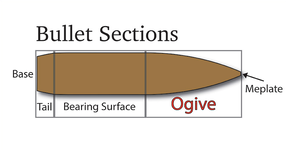- Joined
- Sep 26, 2024
- Messages
- 8
I'm new to handloading and have a couple questions about the CBTO measurement. I bought the Hornady OAL gauge and bullet comparator set. Just had my Tikka rebarreled to 280 Ackley so I bought a few different bullets to try out along with a few boxes of factory ammo.
Using the Hornady tools, there was quite a bit of variation in the CBTO measurement between the bullets (I repeated the process 2 or 3 times for each bullet, these are averages):
Bullet 1: 2.68
Bullet 2: 2.70
Bullet 3: 2.77
Maybe I'm thinking about it wrong, but shouldn't the CBTO measurement be the same regardless of bullet? I thought that was the whole point of measuring to the ogive instead of looking at COAL. That 3rd bullet is a Barnes 150gr ttsx, which I know is a long bullet, but I didn't think that mattered for CBTO. Are these tools fairly inaccurate or maybe I'm not being consistent with how hard I jam the bullet into the lands? Anyone else have a similar experience?
2nd question relates to the factory loads: The CBTO measurement was 2.66, 2.70, 2.71, 2.70. If my chamber CBTO measurement (using the measurements above) is 2.70, does that mean that 3 of these 4 factory loads are going to jam into the lands when I try to chamber them? Just got my gun assembled and haven't been to the range yet to test it out, so maybe I'm just worrying about nothing?
Using the Hornady tools, there was quite a bit of variation in the CBTO measurement between the bullets (I repeated the process 2 or 3 times for each bullet, these are averages):
Bullet 1: 2.68
Bullet 2: 2.70
Bullet 3: 2.77
Maybe I'm thinking about it wrong, but shouldn't the CBTO measurement be the same regardless of bullet? I thought that was the whole point of measuring to the ogive instead of looking at COAL. That 3rd bullet is a Barnes 150gr ttsx, which I know is a long bullet, but I didn't think that mattered for CBTO. Are these tools fairly inaccurate or maybe I'm not being consistent with how hard I jam the bullet into the lands? Anyone else have a similar experience?
2nd question relates to the factory loads: The CBTO measurement was 2.66, 2.70, 2.71, 2.70. If my chamber CBTO measurement (using the measurements above) is 2.70, does that mean that 3 of these 4 factory loads are going to jam into the lands when I try to chamber them? Just got my gun assembled and haven't been to the range yet to test it out, so maybe I'm just worrying about nothing?


